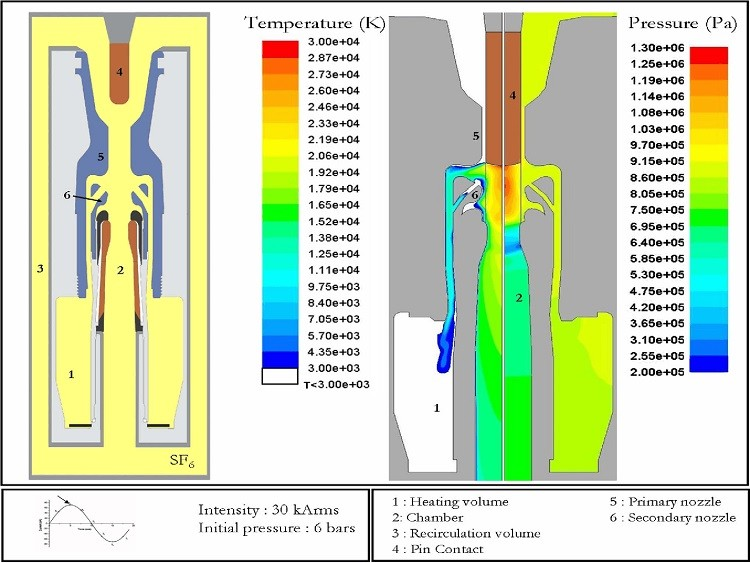
- English
- Español
- Português
- русский
- Français
- 日本語
- Deutsch
- tiếng Việt
- Italiano
- Nederlands
- ภาษาไทย
- Polski
- 한국어
- Svenska
- magyar
- Malay
- বাংলা ভাষার
- Dansk
- Suomi
- हिन्दी
- Pilipino
- Türkçe
- Gaeilge
- العربية
- Indonesia
- Norsk
- تمل
- český
- ελληνικά
- український
- Javanese
- فارسی
- தமிழ்
- తెలుగు
- नेपाली
- Burmese
- български
- ລາວ
- Latine
- Қазақша
- Euskal
- Azərbaycan
- Slovenský jazyk
- Македонски
- Lietuvos
- Eesti Keel
- Română
- Slovenski
- मराठी
- Srpski језик
Design principle of high voltage vacuum circuit breaker
2024-01-04
At its core, a high voltage vacuum circuit breaker comprises crucial components, including contacts, vacuum interrupters, operating mechanisms, and control circuits. The fundamental working principle revolves around utilizing a vacuum as the insulation medium between the contacts. When the circuit breaker is in a closed state, the contacts establish a conducting path for electrical current. However, during a fault, the vacuum interrupters swiftly extinguish the arc formed between the contacts upon separation, ensuring a safe interruption of the current.

Importance of Dielectric Strength
Dielectric strength is a critical consideration in the design of high voltage vacuum circuit breakers. The vacuum insulation must possess exceptional dielectric properties to withstand the high voltage differentials across the contacts. By maintaining a vacuum environment between the contacts, the risk of ionization and subsequent arcing is significantly minimized, enabling the circuit breaker to operate reliably even at high voltages.
Design Considerations for High Voltage Vacuum Circuit Breakers

1.Contact Material Selection
Meticulous selection of contact materials is crucial in high voltage vacuum circuit breaker design. Materials must exhibit excellent conductivity, resistance to wear, and the ability to endure repeated opening and closing operations without degradation. Commonly used materials include copper alloys, silver, and tungsten-copper compositions.
2.Mechanism for Arc Quenching
The arc quenching mechanism is a cornerstone of vacuum circuit breaker design. Vacuum interrupters possess the unique capability to swiftly extinguish arcs by leveraging the vacuum's insulating properties. This rapid arc quenching is vital to prevent damage to the contacts and maintain the breaker's operational integrity.
3.Control and Monitoring Systems
High voltage vacuum circuit breakers often integrate advanced control and monitoring systems. These systems enable remote operation, real-time status monitoring, and fault detection. The integration of digital technology enhances the circuit breaker's reliability and facilitates preventive maintenance.
Advantages of High Voltage Vacuum Circuit Breaker Design
The design principles of vacuum circuit breakers for high voltage applications offer several distinct advantages:
Enhanced Safety:
Vacuum insulation eliminates the risk of gas-based arcing and explosions, ensuring safer operation in high voltage environments.
Minimal Maintenance:
The absence of traditional arc-extinguishing mediums like oil or gas reduces maintenance requirements, contributing to improved operational efficiency.
Swift Interruption:
The vacuum interrupters' ability to rapidly extinguish arcs results in quick and reliable fault current interruption, minimizing downtime in electrical networks.
Conclusion
The design principles of high voltage vacuum circuit breakers are rooted in a deep understanding of electrical phenomena and materials science. These intricate devices combine advanced engineering with precise material selection to ensure the safe and reliable operation of high voltage electrical systems. By harnessing the unique properties of vacuum insulation, these circuit breakers stand as a testament to human ingenuity in safeguarding our complex power distribution networks.




